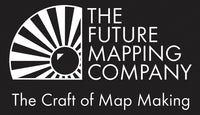Q and A with founder Marcus Kirby
We chat with The Future Mapping Company founder, Marcus Kirby about the inspiration the designs, how running a small business has changed, what is next for Cartography, and Future Maps!
Q. Where did your interest in maps stem from?
When I was a child, I used to go to the lake district with my Dad, we’d go for a walk then buy a map of the area and mark our route on it. Once introduced to map like that, you can’t help but appreciate the beauty and work that goes into it. I still think an Ordnance Survey map is the best £7 you’ll ever spend, considering the time and work that’s gone into it.
I think that's what first led my love of maps, though I never thought of pursuing cartography as a career until much later.
I also loved flicking through atlases, particularly looking at the visually stimulating infographic maps at the front; the population density etc. The intriguing patterns of colours and data fascinated me. They really spark your imagination.
Q: Your background is in fashion and tailoring; how did you decide to make the transition into cartography?
I was lucky that the tailoring company I worked for also had a foot in the fashion world, which was amazing in my 20's and led to lots of travel and great opportunities. However, I couldn’t see myself still in that industry in my 40’s. And if I'm completely honest, I found dealing with clients on a very personal level quite exhausting. It was too much for me daily, I think I prefer having some time working behind a screen too!
I reached a point when I felt that I wanted to set up my own company, but tailoring wasn't the right industry for me to do it in.
I started thinking, if it’s not tailoring, what will it be? I felt I had to have a change and I started working for a colourist, which was also linked to fashion but other sectors too. We thought, what products can we enhance by just adding clever fashion-led colouring? We worked for the automotive sector and even created flocked wallpaper in a modern colour palette that did quite well and sold in Liberty and other top end interior stores.
My mother continued to encourage me to set up my own business. She said to me, if you work as hard as you do, you should have your own company. She was from a working class background, and had always worked for large companies. I think she felt she could have moved forwards more if she had done her own thing. Though it was only when she died that I had the money to take a year off to set up my own company.
Then things came full circle and my thoughts went back to maps. Despite being fascinated by them, I felt most maps were quite dated and reminded me of the geography classroom and would really benefit from a design-led update. It starting playing on mind. I looked at marketplace and genuinely felt there was a gap there for something a bit different.
Q. Are there any designers, maps or cartographers that have particularly inspired you?
Fortune magazine really encouraged my professional interest in infographics and maps (see image on left). Dieter Rams, the industrial designer who was head designer of Braun is a huge inspiration on the design front. If you look at his designs now you will see they were a real forerunner to Apple today.
Q. How did you decide which modern map projections to use?
Predominantly, our decisions are led by considering which maps are most visually stimulating, that look a bit different or have a really cool story behind them. I didn’t really know much about map projections before setting up FutureMaps so I was quite surprised, like everyone else, to realise how inaccurate the 'normal' world map was, and that Greenland was 550% the size it actually is!
The Equal area map was an obvious choice, it has a fascinating story, it’s a bit different, and makes great wall art. It also complimented our desire to push the design and visual of traditional world maps forward.
Q. You started FutureMaps 14 years ago. How has cartography and the map market changed since then?
We came along on the cusp of change, just as maps were moving onto screens. It was before Google made many maps defunct, the London A-Z for example.
As there was no internet, there was a lot of trawling around trying to get stores to buy our maps. However, due to the wall space maps require, it was difficult.
Initially, we only had the future map, but the fact it was so new and refreshing meant despite the issue of how to display it, people still picked up on it and we got into cool stores, 2021, Moss and SCP to name a few. Our maps filled a space in the market as a design product, or interior accessory, rather than a straight reference map.
It wasn’t until the internet came along that we really found our customers. We could then display all maps at once, in a sweetshop effect! We were lucky that we were at the forefront of shopping online, it meant that even as a niche business, we were able to start making profit for the first time. Just selling through stores for the first 5 years before internet had been difficult.
To begin with, we didn't really have much competition. Now a lot of graphic artists love using map data in an abstract manner. Maps are fascinating, non pretentious and make great visuals so it's no surprise. However, the actual map market, especially the printed sector, is still minute. The main issue is that map making is laborious, and you can be picked apart for even the smallest errors. Creating a fully functional map, combining accuracy with design, takes a lot of time, thought and effort. Perhaps this is why not many other people are currently trying to attempt it!
Q. How has running a small company changed over time?
The internet has obviously changed things, initially we were uncertain of what it meant, but then having a website and it's ability for mass sales became apparent and definitely changed how we work.
It's been great for small businesses, it allows creatives to get out there and try and sell their products independently. Initially, there was an explosion with flash sale websites and a few major online stores, but now people are creating their own story and brand rather letting than big companies doing it for them.
Small companies are now taking control, making their own story, using their own websites and social media creatively, which is great.
Q. What advice would you have for someone who wanted set up their own design led company?
The trouble is, if you’re a creative, the dream is usually to design something everyday. If you have a small company, you need to push the same product every day. Any product is costly to create so you need to focus on those you've already made. If you’re happy to commit to one product do it, if not, stick to designing!
Q. Do you have a favourite Future Map?
The geology map is a current favourite. It highlights the 'wow' factor, the beauty and glory of mapped data. Up close you get lost in it, and from a distance it blows your mind as a stunning piece of wall art.
Q. How many maps do you have in your own home?
Three I think, unless you have a map room, 3 is the limit!
Q. What is next for Future Mapping?
We've started looking at maps for children and thinking about developing products for different age groups. We're also discussing maps collaborations with other products in the future. Watch this space!








